Albert Einstein - A Centennial Celebration of His Miraculous Year
Einstein - The Person
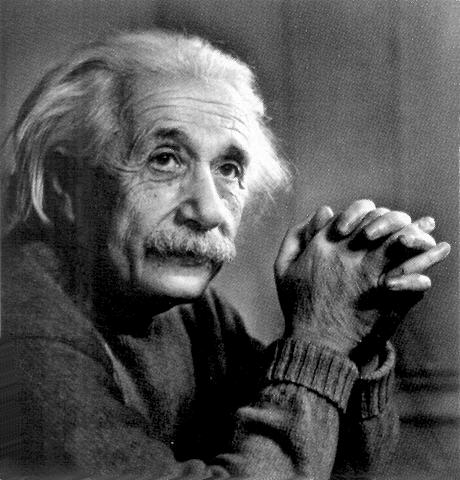
Albert Einstein (1879-1955), from Pictures of Famous Physicists
The best-known scientist of all time is Albert Einstein. He was born in Ulm, Germany on March 14, 1879.
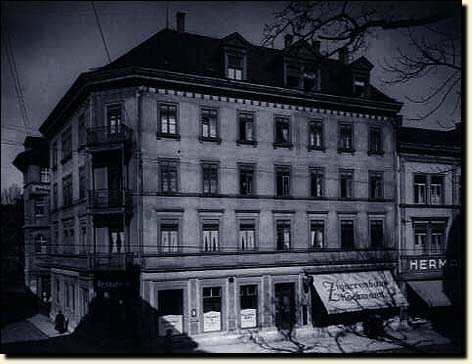
The house in which Einstein was born, from AIP History Center
His mother, Pauline Koch Einstein, was the cultured member of the family.
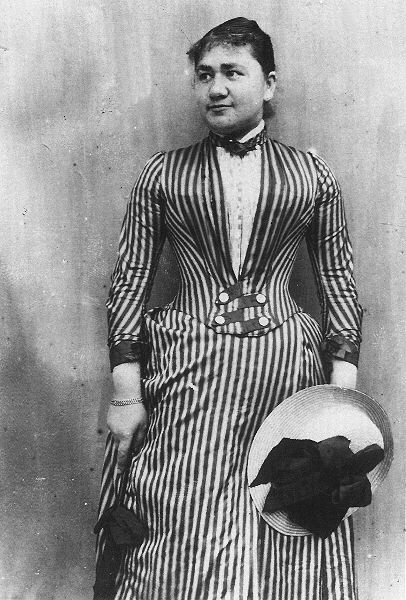
Pauline Koch Einstein (1858-1920), from Pictures of Famous Physicists
It was she who encouraged Albert to take up the violin - an activity he enjoyed for the rest of his life.
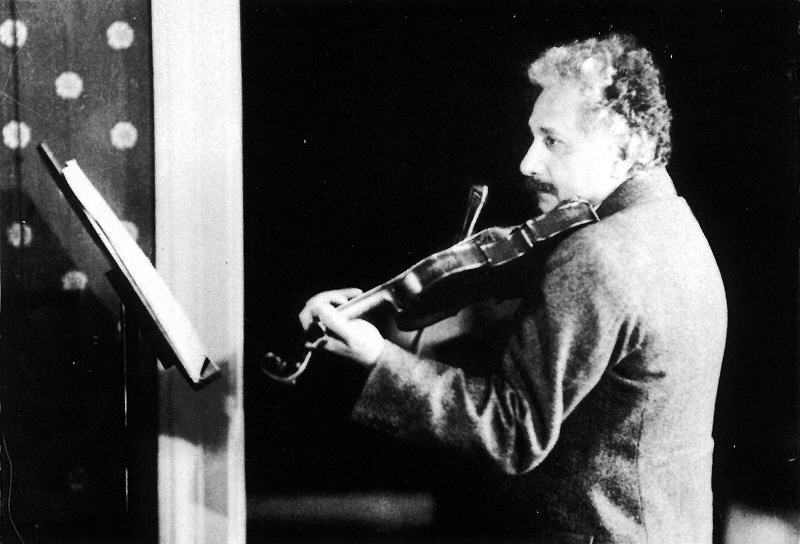
Einstein with his violin in 1929, from Pictures of Famous Physicists
His father, Hermann Einstein, enjoyed only limited success in business.
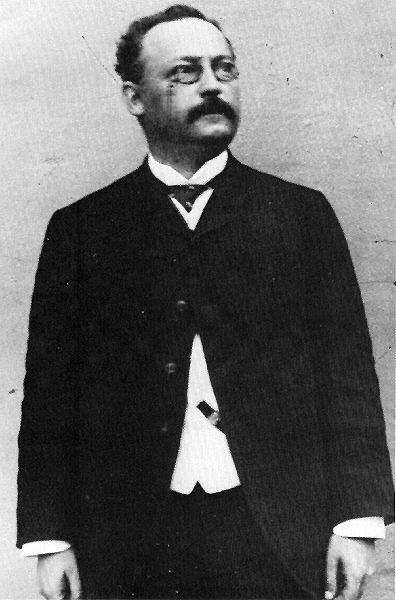
Hermann Einstein (1847-1902), from Pictures of Famous Physicists
He started in the featherbed business, but switched over to the business of electrical dynamos.
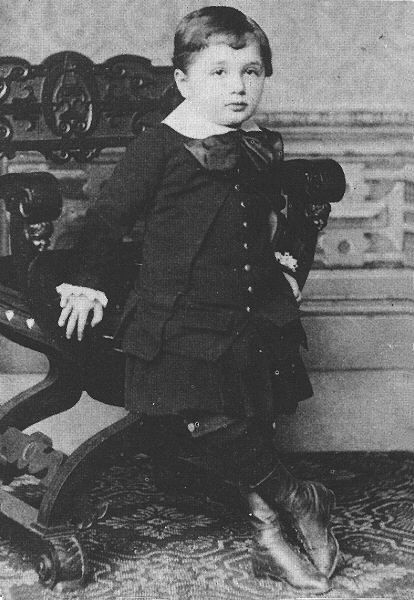
The earliest known photo of Einstein, from Pictures of Famous Physicists
When Albert was one year old, the family moved to Munich, following a financial crisis in his father's business. When two years old, Albert's family grew with the addition of his sister Maja.
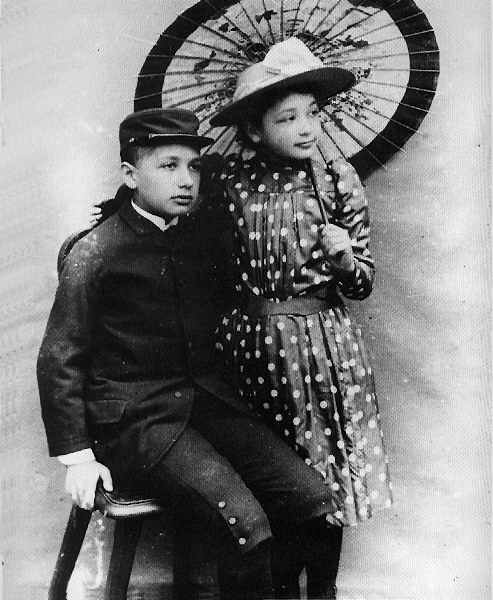
Albert and Maja (1893), from Pictures of Famous Physicists
There are many myths about the young Einstein. It is true that he was late in learning how to speak. In fact, this lead his parents to fear that he might be retarded! When he did finally speak, however, he spoke in complete sentences. It is not true that he was a poor at math. He excelled at math and science, but he was a weak student in other subjects. He found the authoritative German education system which emphasized rote memorization, uninspiring. As a result, he did not impress his teachers and his headmaster commented that "it doesn't matter [which profession he chooses]; he'll never make a success of anything."
At age 4 or 5, his father showed him a compass.
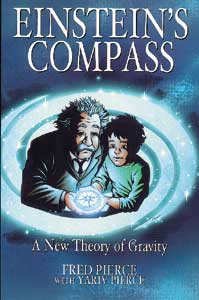
From Wizarduniverse.com
The fact that an invisible force was acting on the needle so impressed him that he would later recall this moment as his "first miracle." This was the beginning of his fascination with electromagnetism, which would eventually lead to the special theory of relativity. At age 11, Einstein became devoutly religious and started studying his Jewish faith deeply. This interest quickly passed, as he started to observe that many of the miracles in the religious texts violated the laws of science. A friend of the Einstein family, Max Talmud, tutored Albert and gave him a book on geometry when he was 12 years old. This became a new Bible - he called it his "holy geometry book" - and he referred to this as his "second miracle." He was intrigued with Euclidean geometry and followed this self-study by teaching himself calculus. Einstein often preferred self-study to the classroom. The tutor found himself unable to keep up with Albert in math, but continued to discuss philosophy with Albert.
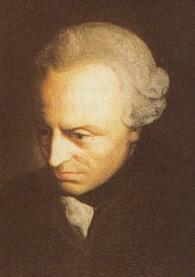
Immanuel Kant (1724-1804), from Pictures of Famous Physicists
Einstein was so impressed with Immanuel Kant's Critique of Pure Reason, that he considered becoming a philosopher (much to his father's distress). Kant's comments on a world government were ideas that Einstein supported in his later years when he became more politically involved.
In 1894, Hermann, Pauline, and Maja moved to Milan, Italy to open a new factory in nearby Pavia, following the failure of Hermann's company in Munich. Not wanting to interrupt Albert's education, the family left him in Munich to finish his high school education. Albert did not do well at the boarding school.
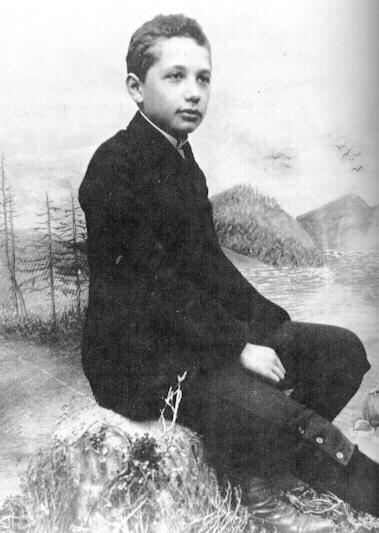
Albert at age 14, from Tom Michalik's "Einstein" webpage
He had his family doctor write a note saying he might suffer a nervous breakdown if he did not return to his family. He left for Italy and arrived unannounced at his parents door. Michio Kaku describes him at this stage in Einstein's Cosmos as "a draft dodging, high school dropout with no skills, no profession, and no future."

The Zurich Polytechnic Institute in Switzerland, from AIP History Center
It is at this point that Einstein tries to get admitted to the Zurich Polytechnic Institute in Switzerland. Another myth is that Einstein failed his college entrance exam. This is, in fact, true. However he was two years younger than most students taking the exam. Also, he did so well in the math and physics sections that he was allowed to enter the following year without retaking the exam.
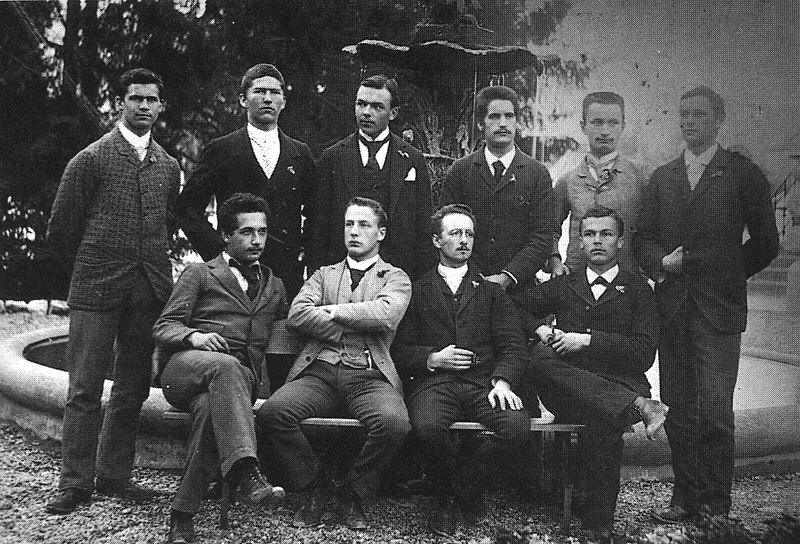
Einstein (front row left) in highschool, from Pictures of Famous Physicists
Einstein spent the intervening year attending a high school in Aarau, Switzerland. He found the Swiss school much more liberal and refreshing than the German system. In fact, he even renounced his German citizenship. Einstein was now entering what Michio Kaku describes as his second phase: "something of an impudent, cocky, sure-of-himself Bohemian, always full of clever quips." This year (during which he was 16) was liberating and enlightening. This was the time when Einstein started thinking about what would happen if he were to chase a beam of light.
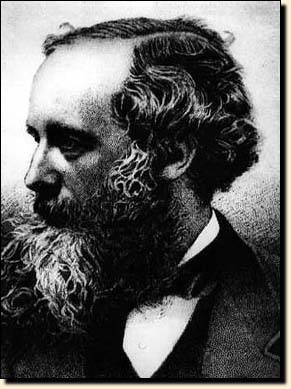
James Clerk Maxwell Hermann Einstein (1831-1879), from AIP History Center
Since light is an electromagnetic wave, as was known at the time from the work of James Clerk Maxwell, it represents an oscillation in time. If one were to catch up to a beam of light, then it would appear frozen and there would be no oscillation. Something is clearly wrong in this thought experiment! Einstein would resolve the contradiction a decade latter. No doubt Albert's exposure to the electromagnetic machines of his father's business helped provide him with an intuitive understanding of electricity and magnetism. This intuition lead him to seek elementary explanations of profound results. He said: "All physical theories, their mathematical expressions notwithstanding, ought to lend themselves to so simple a description that even a child could understand."
In the fall of 1895, Einstein entered the Zurich Polytechnic Institute.

Zurich Polytechnic Institute, from AIP History Center
There were only five students in Einstein's physics class.
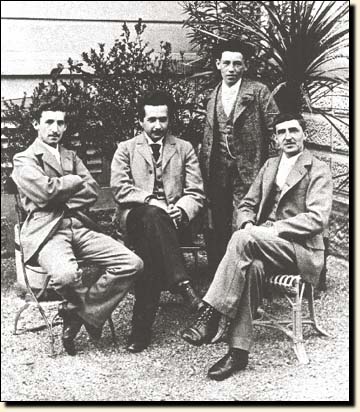
Marcel Grossman (left), from AIP History Center
One of his colleagues, Marcel Grossman, took meticulous notes which Einstein borrowed frequently. In fact, he commonly skipped class and instead studied Grossman's notes. Another member of the physics class was Hungarian-born Mileva Maric.

Mileva Maric (1875-1948), from Pictures of Famous Physicists
Albert developed a relationship with her, much to the chagrin of his family. In 1900, he graduated with a degree in physics and math. Though marriage to Mileva was the plan, Albert could not find a steady job (his free-spirit attitude did not set well with some at the Polytechnic, especially Heinrich Weber, and he had trouble getting good letters of support). Without a job, he could not marry.
In 1901, Mileva flunked her final exams for a second time, effectively ending her physics career. In late 1901 while living with her parents, Mileva wrote a letter to Albert telling him that she was pregnant. She had a baby girl named Lieserl. Mileva returned to Switzerland and left Lieserl with her parents. In September 1903 her parents sent a letter to Mileva and Albert saying that Liersel had scarlet fever. This is the last known record of Lieserl. Historians think that she either died or was given up for adoption. No other records of her exist and her existence was unknown until the 1990's when the letters between Mileva and Albert became public. Einstein never met his daughter.
In 1902, Marcel Grossman was able to find a job for Albert at the Bern Patent Office.
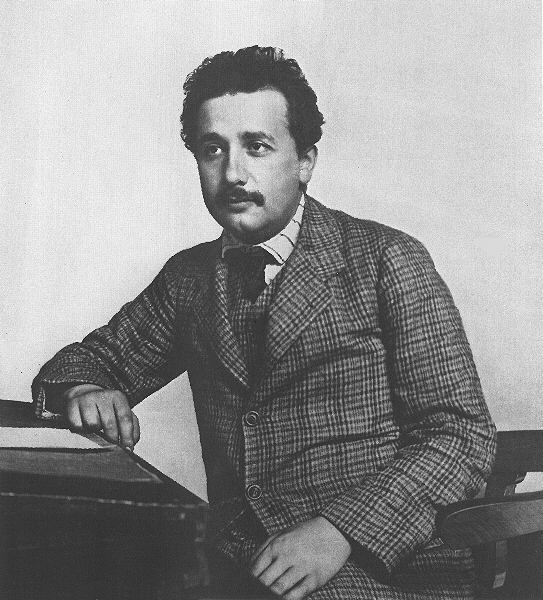
Einstein at the patent office, from Pictures of Famous Physicists
On June 23, Einstein started at the patent office as a technical expert, third class. Later that year, Hermann died, but on his deathbed gave Albert his blessing to marry Mileva. In January 1903 Albert and Mileva married.
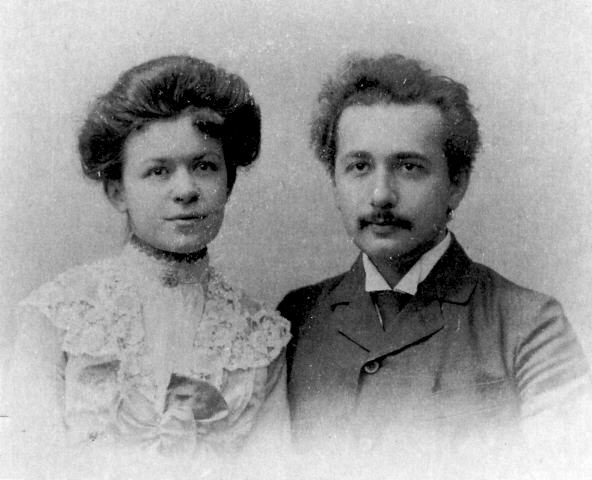
Mileva and Albert were married January 6, 1903, from Pictures of Famous Physicists
A year latter their son Hans Albert was born.
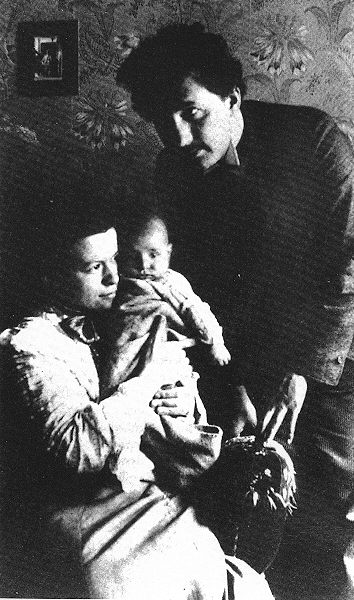
The Einstein family in 1904, from Pictures of Famous Physicists
It was in this family environment while working at the Swiss patent office that Einstein flourished and produced the papers of his annus mirabilis, or "miraculous year."
Go to The Miraculous Year section.



















